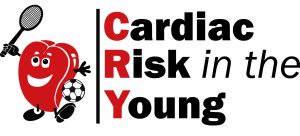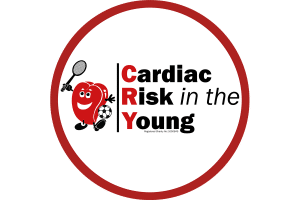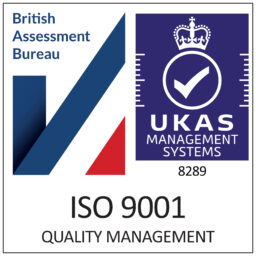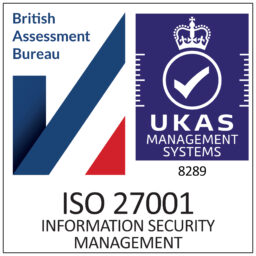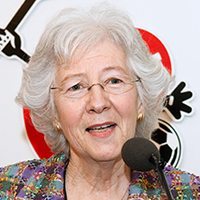
CRY Founder
The development of CRY’s bereavement support programme – Alison’s Column Update 73
When I started CRY in 1995, I increasingly became aware of how affected families were left floundering not only for an explanation as to what could possibly have caused their tragedy, but also some understanding as to how much it was happening, as well as the genetic implications.
Professor Bill McKenna at St George’s Hospital, Tooting, was at that time considered the leading doctor in the country regarding young sudden cardiac death, and CRY’s fundraising was dedicated to providing his clinic with its own echocardiogram machine. This was so that he could expand the family young sudden cardiac death clinic; which was limited at the time because his echocardiogram was shared with another department.
Consequently, the St George’s clinic became the first clinic in the country to provide a specific service for young sudden cardiac death. Being referred to this clinic not only gave the family the security of knowing they were being tested by an expert, but it also was the first opportunity for Bill to get some statistics which very quickly shot up from 1 death a week in the UK to – at that point – 4 deaths a week.
It became increasingly clear to me that the distress of the family was greatly exacerbated by the lack of information available about what had killed their child. It was terrifying for them to learn that the condition that had caused the death was genetic, thus leaving other family members at risk which hugely compounded their suffering. Many also found that they needed to talk about what had happened and their feelings, and found it difficult to do this with other distraught family members who were grieving too.
It was obvious that there was a desperate need to develop a programme that could both provide clear information about every condition that could cause a young sudden cardiac death, and widen the individual support available.
We have always been proud that we have never asked, or accepted an invitation, for sponsorship. Although this initially greatly limited our scope, it uniquely enabled us to make completely independent decisions about the campaigns we chose to run, as well as explain to our fundraisers why these had been chosen. It ensured absolute transparency for the families that fundraised for CRY and freed up decisions that needed to be made as to which initiative we should progress next, whilst also giving our doctors complete freedom to determine our next project and the research that needed to be undertaken.
There have been a number of sponsorship approaches in the past – some subtle, others more blatant. Inevitably, these organisations have their own agenda, but CRY is a pioneering charity that is constantly able to challenge the restrictions, the inaccurate information promulgated, and the frustratingly inaccurate statistics produced by the government’s own Director of Screening.
Not succumbing to the offers that were made to us enabled us to be unfettered by any obligation to others, and greatly facilitated the progress achieved in areas not previously tackled. It was crucial we could be free to address these.
But we made one vital exception…
From the very beginning, mothers that I spoke to were always grateful to get information, know that they were not alone, and that the statistic of being “1 in a million” that they were almost invariably given by their GP was a gross misrepresentation of how many young sudden cardiac deaths there were every year. But this had never been challenged, and so the convenient illusion that it was too rare to support – and that therefore nothing could be done – remained the status quo.
More than anything I found that mums needed to talk to other mums to learn that it was possible to find a way to survive their terrible tragedy. I felt if we could train parents – affected mums and, if possible, dads too – to talk to other mums and dads, it could make a massive difference.
So, I approached the Department of Health (DoH) with a proposal for offering individual telephone support to newly bereaved family members, by others that had received counselling training so they had the confidence to speak to a person they had never met, on the phone, but whose suffering they understood better than any other.
 The DoH was very supportive of this idea and the Secretary of State for Health, Yvette Cooper (right), announced their support at our 2002 Parliamentary Reception, giving us a 3-year grant of £100,000 to fund the training of our first group.
The DoH was very supportive of this idea and the Secretary of State for Health, Yvette Cooper (right), announced their support at our 2002 Parliamentary Reception, giving us a 3-year grant of £100,000 to fund the training of our first group.
This seamlessly led to the development of CRY’s Bereavement Support Programme which has changed very little to this day, 22 years later. It paved the way for the formal instigation of CRY’s bereavement support service and we now train a new bereavement support group every 2 years, which also includes the training of siblings and partners.
The ‘students’ who volunteer their time to train are committed to a 2-year residential course, for 6 weekends on alternate months each year. At the end of this time they achieve a British Association of Counselling Certification for Skills and Theory, which gives them the confidence that they are equipped to provide telephone counselling. This DoH grant undoubtedly liberated the extension of our support programme at a critical time when we were treading water as to how we could move forward our service provision for affected families.
This was the backdrop to progressing the multi-faceted support system we have in place today, which offers the peer-to-peer support that still underpins how we connect with and support bereaved families.
 This support system is committed to individual one-to-one telephone support taken by our bereavement supporters, who have helped 388 bereaved family members over the last 10 years alone. This support is offered to them for 6 months. Every family that contacts CRY is also given the option of having a 1-hour call with me to answer their immediate questions – particularly with helping them understand the role of the pathologist and coroner in identifying the cause of death; and I have taken over 2,000 of these ‘first’ calls.
This support system is committed to individual one-to-one telephone support taken by our bereavement supporters, who have helped 388 bereaved family members over the last 10 years alone. This support is offered to them for 6 months. Every family that contacts CRY is also given the option of having a 1-hour call with me to answer their immediate questions – particularly with helping them understand the role of the pathologist and coroner in identifying the cause of death; and I have taken over 2,000 of these ‘first’ calls.
Group support was initially introduced in 2003 at the annual CRY Family Conference that we held for many years at the Institute of Child Health in London. In the morning, this offered the opportunity to listen to leading cardiologists, such as Professor Sanjay Sharma (left), explain the different causes of young sudden cardiac death; as well as our pathologist Professor Mary Sheppard explaining the importance of expert pathology to identify the cause of death; and a coroner detailing their role and why the verdict of ‘natural causes’ – that so deeply upset our bereaved families – had to be used. In the afternoon, there were group meetings for the bereaved with 2 trained bereavement supporters in each group. This event provided a very welcome opportunity not only for those affected to meet each other, but also for them to have the chance to question the expert doctors and coroner that were speakers.
As people started becoming familiar with websites, so had the opportunity for all the medical information to become instantly available. The next important step was when Steve joined our team in 2000. He immediately tackled the development of a CRY website which was particularly for families to quickly access details explaining all conditions that could result in young sudden cardiac death, illustrated by increasingly sophisticated diagrams.

Our Family Conference subsequently became unnecessary, so we then introduced Regional Bereavement Support Days around the UK for families in various parts of the north, south, east and west of England, Scotland and Northern Ireland. These events gave bereaved families the opportunity to spend the day with others bereaved, and have the chance to tell their story and listen to those of others in smaller groups with a bereavement supporter. Very often this was the first time they had managed to tell their story, and in doing so it broke a very important barrier in coming to terms with their tragedy. Listening to others affected helped them understand how others coped with their tragedy.
But the more I spoke to families, and the more confident people became in discussing their personal terrors and troubles, the more aware I became of the distinction between the different aspects of grief. Mums and dads in particular were often deeply troubled by not understanding each other better after the loss of their child, and both were almost invariably anxious to learn more about how to help their siblings.
So, in 2011, we held our first individual aspect of grief event with our Siblings Day in a hotel in Birmingham just next to the station (to reduce travel difficulties), which included 2 bereavement supporters in each of the 2 groups. The deeply touching outpouring of emotion and trapped feelings that were expressed at this event was unforgettable, and not only inspired the development of individual events for mums, dads and partners as well, but lead to the Aspects of Grief booklets, of which our most recent, on A Friend’s Grief (below), launched this November.
Our booklets, both in print and online, have reached thousands of people affected by a young sudden cardiac death, and the ‘Grief Library’ now includes booklets about managing Christmas and anniversaries to offer support to those struggling with the most difficult times of the year.
Another major opportunity to develop our bereavement support programme came with the arrival of CRY Patron and opera singer Kathryn Harries on the CRY scene. She suggested that we incorporate a walk for our bereaved families and their friends, which she thought would best be held in a beautiful part of London.
We began to understand the importance of just peacefully walking, and with the great organisational skills of Fundraising Manager Rebecca Zouvani (left) we created our London Bridges Walk where 8 bridges were selected to co-ordinate with the (at the time) most recent CRY statistic of 8 young sudden cardiac deaths a week.
It was a walk that was led by Kathryn for many years and has morphed into one of the most significant events on the CRY calendar, with an average of 1,000 bereaved and their friends, dogs, children and babies in pushchairs attending. I have never seen a more moving vista than the stream of 1,000-plus people stretched out in a long winding path, walking across the London Bridges with their CRY balloons softly waving in the summer breeze.
Crucially, this event has led to the development not only of an annual walk held through the beautiful old city of Durham, but also inspired WalkandTalk events in Middlesex organised by Jeff and Sandra Markham, and Geoff and Linda Goodwin in Gloucestershire.
We are totally committed to maintaining and developing the many facets of our Bereavement Support Programme. It is such a vital part of CRY. This summer, our programme grew even further as we introduced new bereavement support groups on Facebook, catered specifically for different people based on their relation to the friend or family member they have lost. We now have groups for bereaved mums, dads, siblings, partners and friends, which we hope will provide comfort to those who want to connect and share with others who have experienced a similar loss. There are more details on the following page.
Our message to all those affected by a young sudden cardiac death is that we cannot take your grieving from you. We cannot grieve for you. But we can do everything possible to reduce your suffering and reassure you that we will be there for the long haul.
Alison Cox MBE
